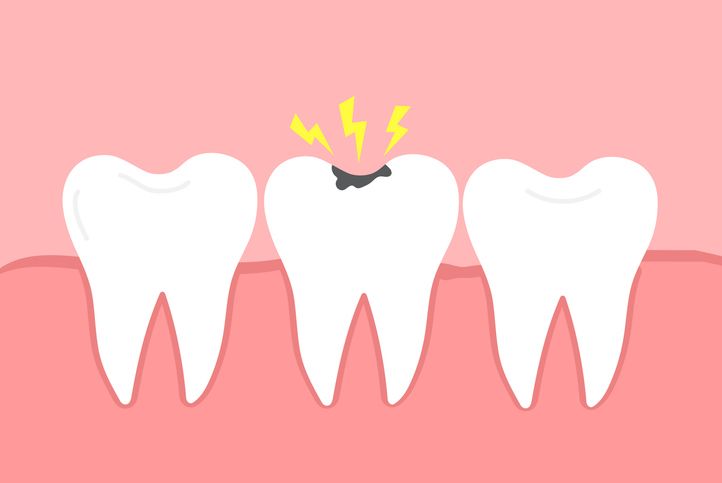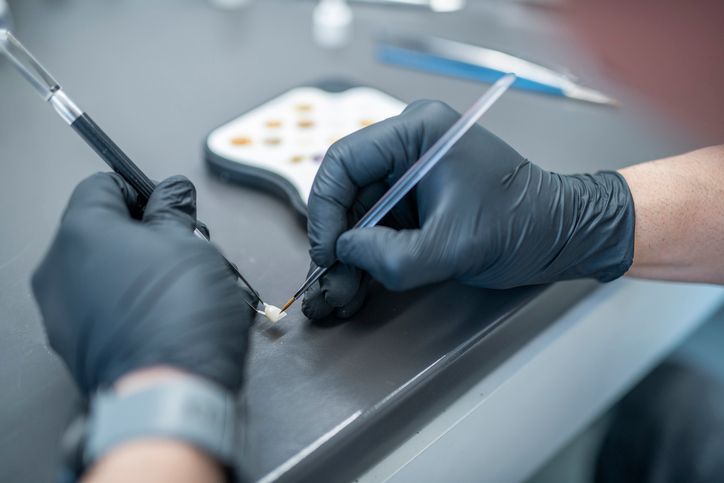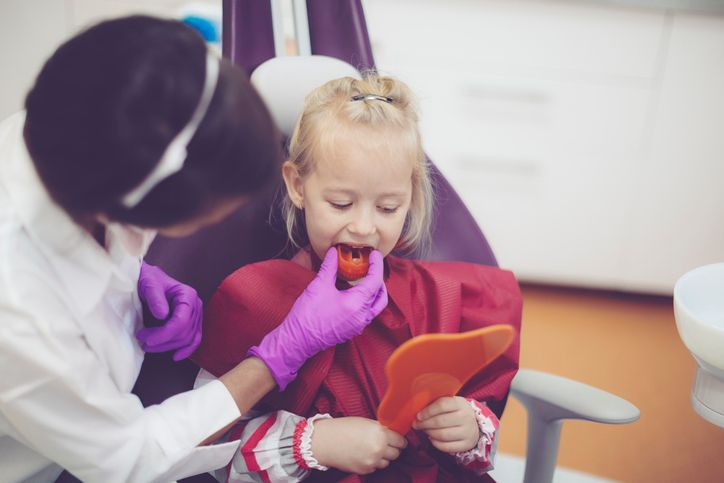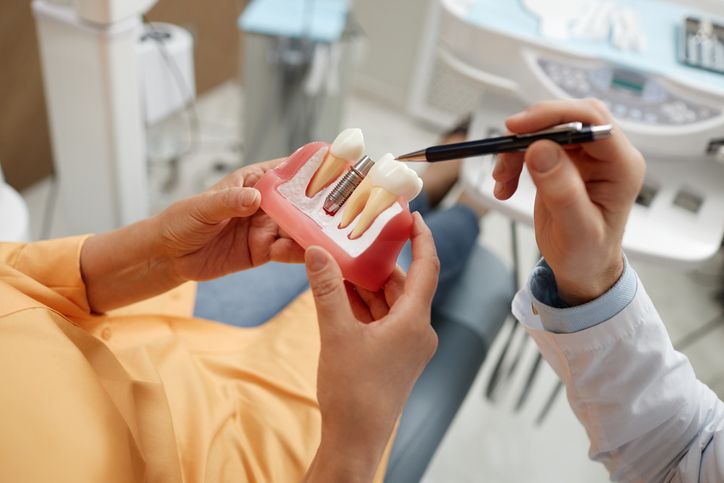What is Invisalign?
Invisalign is an alternative to braces using clear try aligners. The aligners are made of plastic and are manufactured at Invisalign’s facilities based on molds of your mouth taken by your orthodontist. Invisalign offers teens and adults with a more subtle option or straightening their teeth without the hassle of traditional metal braces.
How Does Invisalign Work?
If you are interested in getting Invisalign , you will first have a consultation with your orthodontist at Severns Dentistry & Orthodontics. We will first evaluate your smile, overall oral health, and take impressions of your mouth. These impressions are then sent out to Invisalign, where your aligner will be customized to fit your mouth. We will then create an overall treatment plan for your Invisalign treatment and make any necessary adjustments along the way.
Your Invisalign treatment will work by using a series of clear plastic aligner trays that you will change out every one or two weeks, depending on your personalized treatment plan. These aligners made of a solid piece of plastic that will put pressure on specific parts of your teeth to slowly move them into the correct position. Each time you replace an aligner tray, you may experience a slightly different feeling than the previous tray as it continues to move and shift your teeth and may also experience slight discomfort as your mouth gets used to the new tray.
To ensure your treatment stays on track and work effectively, you will have to wear your Invisalign trays for at least 20-22 hours a day. You can remove them easily to eat or drink, brush and floss your teeth, or for special occasions, where you would prefer not to wear your aligners. Keep in mind that it is crucial to put the aligners back in after these activities to ensure you wear them for the required amount of time each day.
Not wearing your aligners for the proper amount of time each day can set back your treatment, which can be discouraging and frustrating, so be sure to stick to the recommended 20-22 hours a day.

Types of Invisalign
There are a variety of different types of Invisalign available to suit your individual needs, including:
Invisalign Full – This is the Invisalign treatment many people are familiar with. This treatment includes both top and bottom aligners, and treatment lasts around 18 months.
Invisalign Lite – This can be used for patients with less complicated dental issues, providing a quicker way to straighten teeth prior to dental work such as getting a crown.
Invisalign Teen – Teens who need braces but feel embarrassed at the thought of metal braces, can use this treatment. This treatment is developed to accommodate the constantly growing mouths of teens and also features a blue indicator that turns clear to show teens if they are wearing the aligners long enough each day.
Invisalign i7 – This is the newest and the faster Invisalign treatment available. This treatment is tailored to people who just have one or two crooked teeth and can be focused just on those problem areas. It’s also a good option for people who have undergone orthodontic treatment but have teeth that have started to shift back to their original position.
When you visit your orthodontist for your consultation, they will evaluate your needs and recommend Invisalign treatments based on their findings.
Pros and Cons of Invisalign
Like with any type of orthodontic treatment, Invisalign has its benefits and its setbacks.
Pros of Invisalign:
- It’s nearly invisible, so it’s not obvious when you smile
- Easy to remove when eating or cleaning your teeth
Cons of Invisalign:
- May be more expensive
- Can be lost or broken, resulting in more money and time spent on treatment
How Long Will My Invisalign Treatment Last?
How long you undergo treatment with Invisalign will depend on your unique alignment issues. Typically, Invisalign treatment lasts about 12 to 18 months for most adult patients and about 2 to 3 years for tweens and teens. Most patients can expect to begin seeing results within the first few weeks of treatment.
The best way to get an estimated treatment schedule is to consult with your orthodontist at Severns Dentistry & Orthodontics.
Caring for Your Invisalign Trays
To prevent bacteria buildup and discoloration, it is important to properly clean your aligners. To keep your aligners clean, follow these tips:
Take your aligners out each morning. During the night, your aligners will develop a buildup of bacteria, so when you wake up, it is important to remove your aligners to thoroughly clean then and to brush your teeth. This should also be done every night before you go to bed as well.
Rinse your aligners every time you remove them. This helps prevent plaque and dry saliva from building up on your aligners.
Brush the aligners. By using a soft-bristled toothbrush, you can remove plaque from your aligners. It is important to keep up this routine, whether you are at home, school, work, etc.
Brush and floss your teeth before putting your aligners in. Forgetting to brush and floss before putting your aligners back in can leave food particles trapped between the aligners and your teeth, causing cavities, bad breath, and other dental issues.
Give your aligners a daily soak. Keeping your aligners clean will help them remain undetectable to other people, so be sure to soak them with Invisalign cleaning crystals or denture cleaner every day. Once they finish soaking, brush them off and rinse them before putting them back in your mouth.
Stay consistent each day with cleaning your aligners to ensure they stay clean and clear throughout your treatment.
Am I a Candidate for Invisalign?
Invisalign can treat most alignment issues such as gapped teeth, an underbite or overbite, but in some cases, Invisalign may not be an option. If you have a more complicated oral health or alignment issue, Invisalign may not be the most effective treatment for you.
If you have receding gums, gum disease, or weakened bones, you are not likely a candidate for Invisalign. This is why consulting with your orthodontist is the best first step to take when considering treatment.
Younger orthodontic patients whose jaws and teeth are still growing may not be candidates for Invisalign either. Before you decide on aligners or braces, be sure to ask your orthodontist:
- Does my insurance cover more for one treatment than the other?
- Does one option work better than the other in my case?
- Will the company pay for my retainer after treatment?
Costs for Care After Completing Invisalign Treatment
Like with braces, you will likely need to use a retainer after you complete your Invisalign treatment to keep your teeth in their new position. Retainers can be removable or can be cemented to your teeth, and you will typically have to wear one every day for a while before you can switch to wearing one only at night. Retainers cost about $100-$500 each.
What is the cost of Invisalign?
There are a variety of factors that will contribute to how much your orthodontic treatment will cost, including:
- Your oral health needs
- How much work must be done to correct your dental issues
- The location you live in the average cost in your area
- How much your insurance provider will cover for treatment
Keep in mind that the cost will depend on a number of factors, so it is important to consult with your orthodontist to see which solution will most cost-effective based on the severity of dental issues.
How you Can save Money on Invisalign
The orthodontic treatment goes beyond just how your teeth look; it also helps correct crooked teeth that can be difficult to clean, leading decay and periodontal disease and jaw pain. Another reason it is so important is that people who don’t have confidence in their smile may feel a lack of quality of life in their social and professional worlds.
There are ways to make Invisalign affordable:
Health savings accounts (HSA)
With an HSA, you can take out pretax dollars from your salary and put it away to spend only on your healthcare costs. The funds you have in an HSA will roll over into the next year, and they require you to have an insurance plan with a high deductible.
Flexible spending accounts (FSA)
An FSA allows you to set aside a certain amount of pretax money that is take out of your salary and is used for your healthcare costs. This type of account is only offered through your employer and must be included in your employee benefits package. Typically, an FSA is easy to use and has a debit card attached to your account. The funds in your FSA do not roll over, so you will want to make sure you use them before the year ends.
Payment Plans
In many cases, your orthodontist office may offer monthly payment plans to help you break down the cost rather than paying it all at once. At Severn’s Dentistry and Orthodontics, we offer in house payment plans to help with your budget.
Care Credit
Care Credit is a health care credit card, kept separate from your everyday credit cards. At Severns Dentistry & Orthodontics, we accept Care Credit, and If needed, we have application information at our office, or you can access Care Credit online for more information.
Invisalign Providers Near Me
When searching for “Invisalign providers near me,” be sure to choose Severns Dentistry & Orthodontics in McMurray for expert, compassionate care. Our staff is experienced in using Invisalign to treat an array of orthodontic issues, so contact us today to schedule your consultation and begin your journey to the smile of your dreams!
The post What is Invisalign? appeared first on Severns Dentistry and Orthodontics.

Author:
Natalie Severns, DMD
Upon graduating from the University of Pittsburgh School of Dental Medicine, Dr. Severns specialized in Orthodontics and Dentofacial Orthopedics at the University of Pittsburgh School of Dental Medicine. She then did an externship in London, England, at the prestigious Guy’s Hospital. At this hospital, she learned top therapies in Dentofacial Orthopedics to provide her patients with the best possible facial esthetics.
Blog










